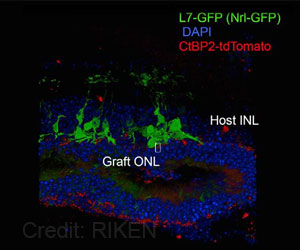
‘A new lab-on-a-chip technology that could quickly screen possible drugs to repair damaged neuron and retinal connections, like what is seen in people with macular degeneration or who've had too much exposure to the glare of electronic screens has been developed.’
Tweet it Now
"This so-called 'bystander killing effect' in retina cone photoreceptors leads us to believe that once retina cells are severely damaged, the killing effect will spread to other healthy cells which can cause irrevocable damage," said Qin. "What surprised us was how quickly the killing effect progressed in the experimental model. Damage went from 100 cells to 10, 000 cells in 24 hours."
The NN-Chip is an improvement on Qin's BloC-Printing technology, which allowed researchers to print living cells onto any surface in any shape within the confines of a mold. With this latest iteration, Qin's lab loaded and tested cells with micro-needles in an open dish so they could tailor the neural network device, study individual cells as well as the progression of drugs through the platform's many channels.
Retinal degeneration is a leading cause of blindness that, together with glaucoma, retinitis pigmentosa, and age-related macular degeneration, will affect 196 million people worldwide in 2020.
Qin hopes the platform will have additional applications in creating models for Huntington's and Alzheimer's diseases and screening therapeutic drugs. Microfluidics focuses on the behavior of fluids through micro-channels, as well as the technology of manufacturing micro devices containing chambers and tunnels to house fluids. In addition to the BloC-Printing chip, Qin's lab at Houston Methodist also successfully developed a nonconventional lab-on-a-chip technology called the V-Chip for point-of-care diagnostics, making it possible to bring tests to the bedside, remote areas, and other types of point-of-care needs.
Source-Eurekalert












